How to Create a Picture-Perfect Rose Garden
Creating a picture-perfect rose garden is like painting a masterpiece; it requires the right colors, careful planning, and a touch of artistry. Roses are not just flowers; they are symbols of love, beauty, and passion. Imagine stepping into your garden, greeted by the sweet fragrance of blooming roses, their vibrant colors dancing in the sunlight. This article will guide you through the essential steps to design, plant, and maintain a stunning rose garden, ensuring vibrant blooms and a beautiful landscape throughout the seasons.
Selecting the perfect rose varieties is crucial for a successful garden. With thousands of rose types available, it's easy to feel overwhelmed. However, understanding the characteristics of different roses will help you make informed choices. Consider factors like climate, soil type, and garden style. For example, hybrid teas are perfect for formal gardens, while climbing roses can add vertical interest to fences and trellises. Here are some popular varieties to consider:
- Hybrid Tea Roses: Known for their large blooms and long stems, ideal for cutting.
- Floribunda Roses: These produce clusters of flowers, perfect for a vibrant display.
- Climbing Roses: Great for adding height and drama to your garden.
- Miniature Roses: Perfect for containers and small spaces, yet still charming.
When choosing your roses, think about the colors you want to see in your garden. Do you prefer soft pastels, bold reds, or a mix? Also, consider the bloom time; some roses bloom early in the season, while others may wait until summer. By selecting a variety of roses, you can ensure your garden is alive with color from spring through fall.
Healthy soil is the foundation of a thriving rose garden. Think of soil as the lifeblood of your plants; without it, they simply cannot thrive. Roses prefer well-draining soil rich in organic matter. Start by testing your soil's pH; ideally, it should be between 6.0 and 6.8. If your soil is too acidic or alkaline, you can amend it with lime or sulfur to adjust the pH.
Incorporating organic matter, such as compost or well-rotted manure, will improve soil structure and provide essential nutrients. Here’s a simple table to help you understand different soil types:
| Soil Type | Characteristics | Best for Roses? |
|---|---|---|
| Sandy | Well-draining but low in nutrients | No, needs amendments |
| Clay | Heavy and compact, retains moisture | No, needs aeration |
| Loamy | Balanced mixture of sand, silt, and clay | Yes, ideal for roses |
After preparing the soil, ensure it has good drainage. You can do this by adding perlite or vermiculite to improve aeration. Remember, roses hate "wet feet," so proper drainage is essential for their health.
Proper planting techniques can significantly impact the growth of your roses. When you're ready to plant, choose a day when the weather is overcast or cooler to minimize stress on the plants. Dig a hole that is about twice the width of the root ball and just deep enough to accommodate the roots without bending them. Place the rose in the hole, making sure the graft union (where the rose variety meets the rootstock) is at soil level.
Spacing is also crucial; ensure you give your roses enough room to grow and breathe. A good rule of thumb is to space hybrid teas about 18-24 inches apart and floribundas about 12-18 inches apart. This allows for proper air circulation, reducing the risk of diseases.
Effective watering is essential for rose health. Roses need consistent moisture, especially during their growing season. Water deeply but infrequently; this encourages deep root growth. A good practice is to water in the morning to prevent fungal diseases. If you’re using a drip irrigation system, aim for about 1-2 inches of water per week, depending on your climate. Remember, overwatering can be just as harmful as underwatering, so always check the soil moisture before watering.
Keeping your roses healthy involves vigilance against pests and diseases. Common threats include aphids, spider mites, and black spot. Regularly inspect your plants for signs of trouble. Prevention strategies, such as ensuring good air circulation and healthy soil, can help keep these issues at bay. If you do encounter pests, consider organic solutions like neem oil or insecticidal soap. These methods are effective and safe for the environment, ensuring your garden remains a haven for beneficial insects.
Fertilization plays a vital role in rose health and blooming. A balanced fertilizer will provide essential nutrients like nitrogen, phosphorus, and potassium. Apply fertilizer in early spring as new growth begins and again in mid-summer to promote continuous blooming. Always follow the manufacturer's instructions for application rates to avoid over-fertilizing, which can harm your plants.
Pruning is essential for maintaining the shape and health of your roses. It encourages new growth, improves air circulation, and removes dead or diseased wood. The best time to prune is in late winter or early spring before new growth begins. Use clean, sharp tools to make clean cuts, and be sure to prune to an outward-facing bud to encourage an open center.
Caring for your roses throughout the seasons ensures continuous blooms. In winter, protect your plants by mulching around the base to insulate the roots. Spring is the time for pruning and fertilizing, while summer requires regular watering and deadheading spent blooms to encourage new growth. As fall approaches, prepare your roses for dormancy by cutting back and applying a final layer of mulch.
Q: How often should I water my roses?
A: Water deeply about once a week, adjusting based on rainfall and temperature.
Q: What is the best time to plant roses?
A: The best time to plant roses is in early spring or fall when temperatures are mild.
Q: How do I know if my roses are getting enough sunlight?
A: Roses typically need at least 6 hours of direct sunlight each day. If your blooms are sparse, they may need more sun.
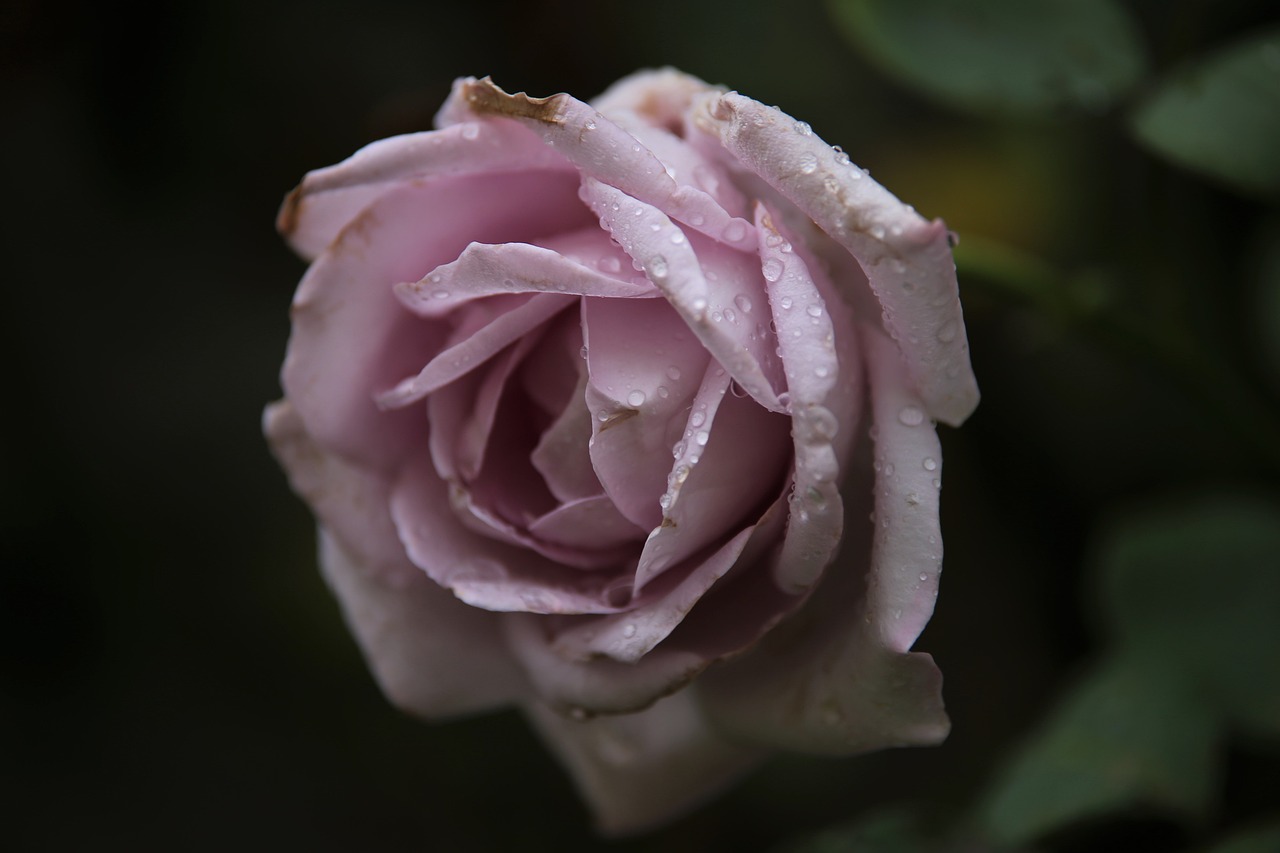
Choosing the Right Rose Varieties
When it comes to creating a picture-perfect rose garden, choosing the right rose varieties is like picking the perfect paint colors for a masterpiece. With so many options available, it can feel overwhelming, but don’t worry! This guide will help you navigate through the vibrant world of roses to find the ones that suit your garden's personality and your local climate.
First off, let’s talk about the different types of roses. There are several categories to consider, each with its own unique characteristics:
- Hybrid Tea Roses: These are the classic long-stemmed beauties, perfect for cutting and bringing indoors. They offer a single bloom per stem and are known for their stunning colors and fragrances.
- Floribunda Roses: If you’re looking for a bush that bursts with color, floribundas are your go-to. They produce clusters of blooms, providing a more abundant display throughout the growing season.
- Climbing Roses: Want to add some vertical interest? Climbing roses can transform a plain wall or trellis into a floral masterpiece. They are great for creating privacy or adding charm to fences.
- David Austin Roses: These English roses are renowned for their old-fashioned blooms and delightful fragrances. They combine the best of both worlds with the beauty of traditional roses and the hardiness of modern varieties.
Now, how do you choose the best varieties for your specific garden? Start by considering your climate. Roses thrive in different conditions; some are more tolerant of heat, while others prefer cooler temperatures. Research which types perform well in your area by checking with local gardening centers or extension services. It’s like finding the right shoes for your feet; they need to fit your lifestyle!
Next, think about your garden style. Are you going for a romantic cottage garden, a sleek modern look, or perhaps a wild, natural vibe? The variety of roses you select can significantly influence the overall aesthetic. For example, if you want a more structured look, hybrid teas might be ideal, while floribundas can add a more relaxed feel with their lush clusters.
Additionally, consider the maintenance level you’re willing to commit to. Some roses require more care than others, including regular pruning and pest management. If you’re a busy bee, opt for disease-resistant varieties that need less attention. Think of it as choosing between a high-maintenance pet and a more independent one—both can be rewarding, but one might fit your lifestyle better!
Lastly, don’t forget about color and fragrance. Roses come in every hue imaginable, and their scents can vary widely. Think about the overall palette you want for your garden and how the aroma will play into your outdoor experience. A garden filled with fragrant blooms can be a sensory delight, turning your space into a personal paradise.
In conclusion, selecting the right rose varieties is a delightful journey that sets the stage for a stunning garden. By considering your climate, garden style, maintenance preferences, and aesthetic desires, you can curate a rose garden that not only flourishes but also brings you joy throughout the seasons. So, roll up your sleeves, dig in, and let your creativity blossom!
Q: How do I know which roses will thrive in my area?
A: Check with local nurseries or gardening clubs for recommendations on rose varieties that perform well in your climate zone.
Q: Can I plant roses in pots?
A: Yes! Many rose varieties can thrive in pots, making them perfect for patios or small spaces. Just ensure the pots have good drainage.
Q: How often should I water my roses?
A: Generally, roses need about an inch of water per week, but this can vary based on your climate and soil type. Always check the soil moisture before watering.

Preparing the Soil
When it comes to creating a picture-perfect rose garden, healthy soil is your best friend. Think of it as the foundation of a house; without a solid base, everything else crumbles. Roses are particular about their living conditions, and the soil they grow in can make or break their beauty. So, before you plant those gorgeous blooms, let’s dig into how to prepare your soil for success!
First, you need to assess the type of soil you have. Is it sandy, clayey, or loamy? Each type has its own characteristics that can affect how well your roses will thrive. For example, sandy soil drains quickly but may not retain nutrients, while clay soil can hold water but may become compacted, leading to poor drainage. The ideal soil for roses is a well-draining loamy mix, rich in organic matter. If your soil leans towards the extremes, don’t fret! You can amend it to create a more hospitable environment.
To improve your soil, consider adding organic matter such as compost or well-rotted manure. These not only enhance soil structure but also provide essential nutrients. A good rule of thumb is to mix in about 2 to 3 inches of organic matter into the top 12 inches of soil. This will help retain moisture while ensuring proper drainage, creating a perfect balance for your roses.
Next, let’s talk about pH levels. Roses prefer a slightly acidic to neutral pH, ideally between 6.0 and 6.8. You can easily check your soil’s pH with a simple test kit available at garden centers. If your soil is too acidic, you can add lime to raise the pH; if it’s too alkaline, sulfur can help lower it. Keeping an eye on these levels will help your roses absorb nutrients more effectively.
Another crucial aspect is ensuring good drainage. You don’t want your roses to sit in waterlogged soil, as this can lead to root rot. If you live in an area with heavy clay soil, consider creating raised beds or adding drainage tiles. A simple test for drainage is to dig a hole about 12 inches deep, fill it with water, and see how long it takes to drain. If it takes more than a few hours, you might need to improve drainage before planting.
Finally, let’s not forget about the importance of soil aeration. Compacted soil can restrict root growth and water absorption. To combat this, you can use a garden fork or aerator to loosen the top layer of soil before planting. This will allow your roses to spread their roots freely, promoting healthy growth and vibrant blooms.
In summary, preparing your soil is a multi-step process that involves:
- Assessing soil type
- Adding organic matter
- Checking and adjusting pH levels
- Ensuring good drainage
- Aerating the soil
By putting in the effort to prepare your soil properly, you’re setting up your rose garden for a flourishing future. Remember, a little work now will pay off in stunning blooms and a garden that will be the envy of your neighbors!
Q: How often should I test my soil?
A: It's a good idea to test your soil every couple of years to ensure optimal conditions for your roses.
Q: Can I use regular garden soil for my roses?
A: While garden soil can work, amending it with organic matter will significantly improve the health and growth of your roses.
Q: What if my soil is too sandy?
A: If your soil is sandy, add organic matter to help retain moisture and nutrients.
Q: Is it necessary to aerate my soil?
A: Yes, aerating your soil can help improve root growth and water absorption, which are crucial for healthy roses.
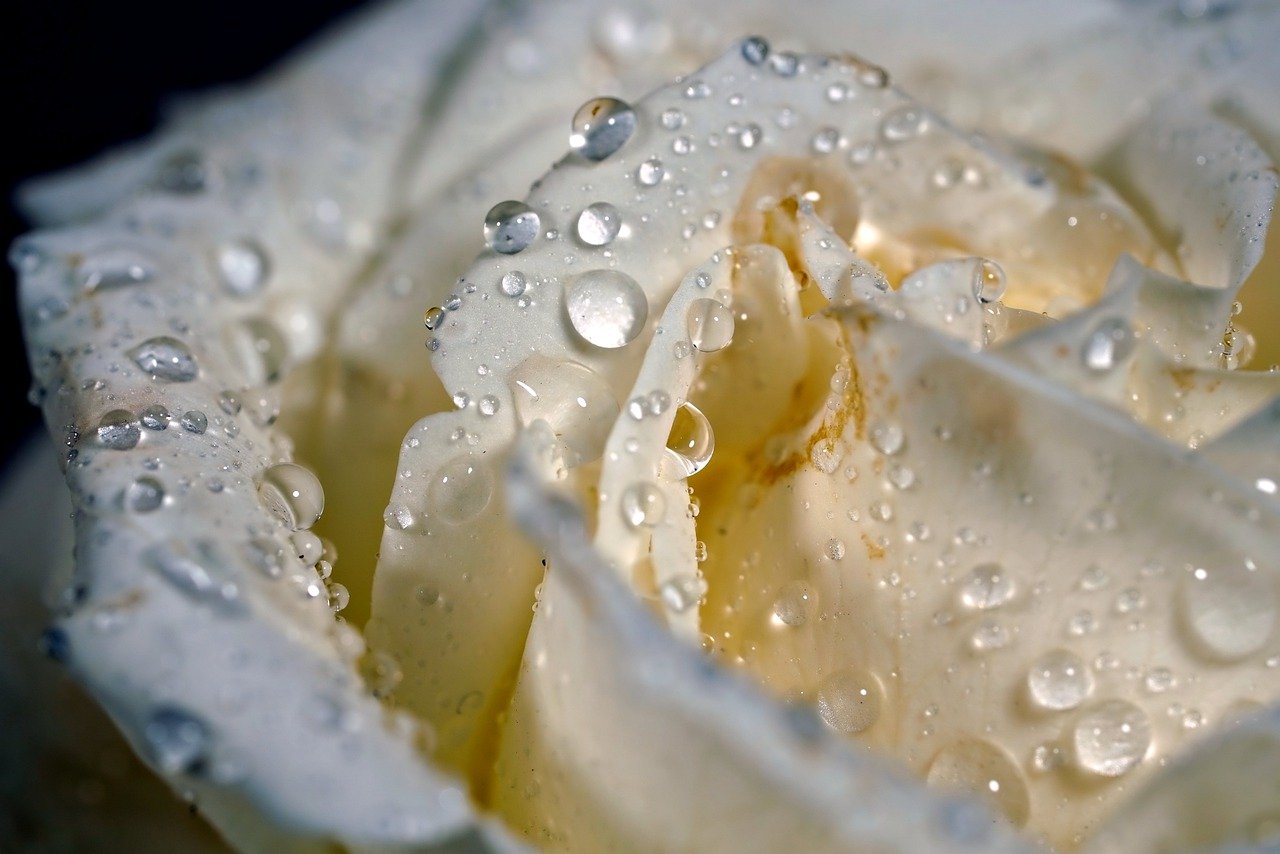
Planting Techniques
When it comes to creating a stunning rose garden, the you employ are absolutely crucial. Think of planting as the foundation of a beautiful home; if the base is weak, everything built upon it may crumble. To ensure your roses thrive, you need to consider several factors, including spacing, depth, and timing.
First off, let’s talk about spacing. Roses love their personal space, so giving them enough room to breathe is essential. Generally, you should aim for at least 18 to 24 inches between each rose bush. This spacing allows for proper air circulation, reducing the risk of diseases that can plague closely planted roses. Imagine trying to squeeze a group of friends into a tiny car; it just doesn’t work! Similarly, your roses need room to spread their roots and bloom beautifully.
Next, the depth at which you plant your roses is equally important. If you’re planting bare-root roses, make sure to dig a hole that is deep enough to accommodate the roots without bending them. A good rule of thumb is to plant them so that their graft union—where the rose variety was grafted onto the rootstock—sits at soil level. This ensures that the plant can draw nutrients effectively while minimizing the risk of rot. For container roses, plant them at the same depth they were in their pot. Remember, planting too deep can suffocate the roots, while planting too shallow may expose them to the elements.
Timing is another critical aspect of planting roses. The best time to plant is during the spring or fall when temperatures are milder. This gives your roses ample time to establish their roots before the heat of summer or the chill of winter sets in. If you’re in a colder climate, consider planting in early spring after the last frost. Conversely, in warmer areas, fall planting can give your roses a head start for the following blooming season.
One technique that many gardeners overlook is preparing the planting site. Before you even think about placing your roses in the ground, take a moment to enrich the soil. Mixing in compost or well-rotted manure can significantly boost the nutrient content, giving your roses a fighting chance. Additionally, consider testing your soil pH; roses typically thrive in slightly acidic to neutral soil (pH 6.0 to 7.0). If your soil is too alkaline, you can amend it with sulfur or peat moss.
Finally, after planting, be sure to water your roses thoroughly. This helps settle the soil around the roots and eliminates any air pockets that could hinder growth. However, be careful not to overwater; roses prefer their soil to be moist but not soggy. A good rule of thumb is to give them about an inch of water per week, adjusting for rainfall.
- What is the best time of year to plant roses? The best time to plant roses is in the spring or fall when temperatures are mild.
- How deep should I plant my roses? Plant bare-root roses with the graft union at soil level, and ensure container roses are at the same depth as in their pot.
- How far apart should I space my roses? Aim for at least 18 to 24 inches between each rose bush to allow for proper air circulation.
- What soil amendments should I use for roses? Incorporate compost or well-rotted manure to enrich the soil and ensure your roses have the nutrients they need.
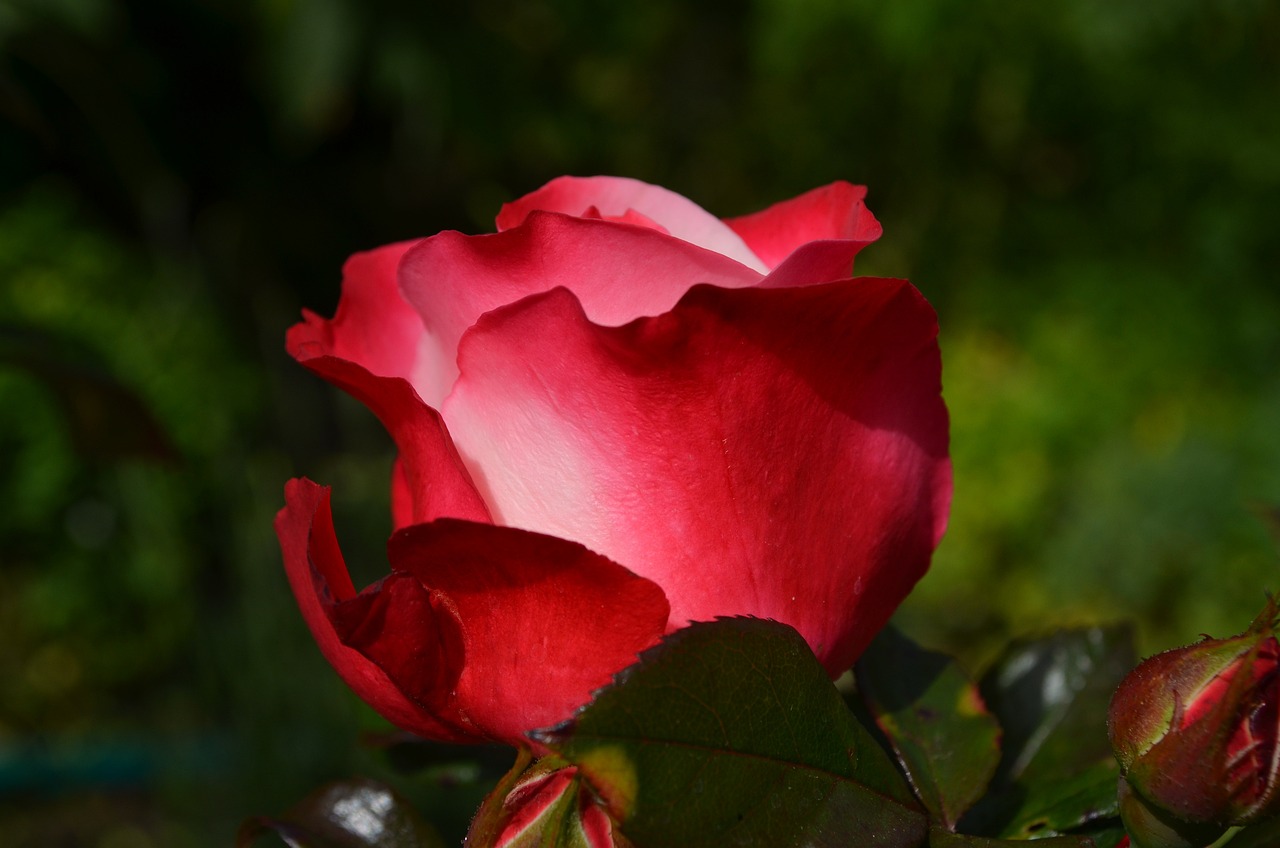
Watering and Irrigation
When it comes to nurturing your roses, effective watering is like giving them a refreshing drink after a long day in the sun. Roses, being the divas of the garden, require a bit of attention when it comes to hydration. The key is to strike a balance; you want to keep the soil moist but not soggy. Overwatering can lead to root rot, while underwatering can stress the plants, causing them to wilt and fail to bloom. So, how do you ensure your roses get just the right amount of water?
First, consider the climate in which you live. Hot, dry regions may require daily watering, especially during the summer months, while cooler climates might only need watering once or twice a week. A great rule of thumb is to provide at least an inch of water per week, either from rainfall or supplemental irrigation. To help you keep track, you might want to invest in a rain gauge!
Next, think about the method of watering. There are several ways to hydrate your garden:
- Drip Irrigation: This method delivers water directly to the roots, minimizing evaporation and runoff. It’s efficient and perfect for conserving water.
- Soaker Hoses: Similar to drip irrigation, these hoses allow water to seep out slowly along their length, providing consistent moisture to the soil.
- Hand Watering: While it may be less efficient, hand watering allows you to pay close attention to each rose, ensuring they receive the care they need.
Regardless of the method you choose, always water at the base of the plant rather than from above. This practice helps prevent fungal diseases that can arise from wet foliage. Early morning is the best time to water, as it allows the plants to absorb moisture before the heat of the day sets in.
Another important factor to consider is soil type. Sandy soils drain quickly, meaning they require more frequent watering, while clay soils retain moisture longer. A simple soil test can help you understand your garden’s needs better. If your soil tends to dry out quickly, consider adding organic matter like compost, which improves moisture retention.
Lastly, keep an eye on the weather. If you experience a rainy spell, adjust your watering schedule accordingly. Your roses will thank you for being a mindful gardener! Remember, maintaining the right moisture levels not only promotes healthy growth but also encourages vibrant blooms, making your garden the envy of the neighborhood.
Q1: How can I tell if my roses need water?
A1: A good indicator is the soil moisture. Stick your finger about an inch into the soil; if it feels dry, it’s time to water. Also, watch for wilting leaves or buds, which can signal dehydration.
Q2: Is it better to water roses in the morning or evening?
A2: Morning is ideal because it allows the plants to absorb moisture before the heat of the day. Watering in the evening can leave the foliage wet overnight, increasing the risk of fungal diseases.
Q3: Can I use tap water for my roses?
A3: Yes, but let it sit for a few hours to allow chlorine to dissipate. Rainwater is even better, as it’s naturally soft and free of chemicals.
Q4: How often should I water newly planted roses?
A4: Newly planted roses require more frequent watering, typically every 2-3 days, for the first few weeks until they establish strong roots.
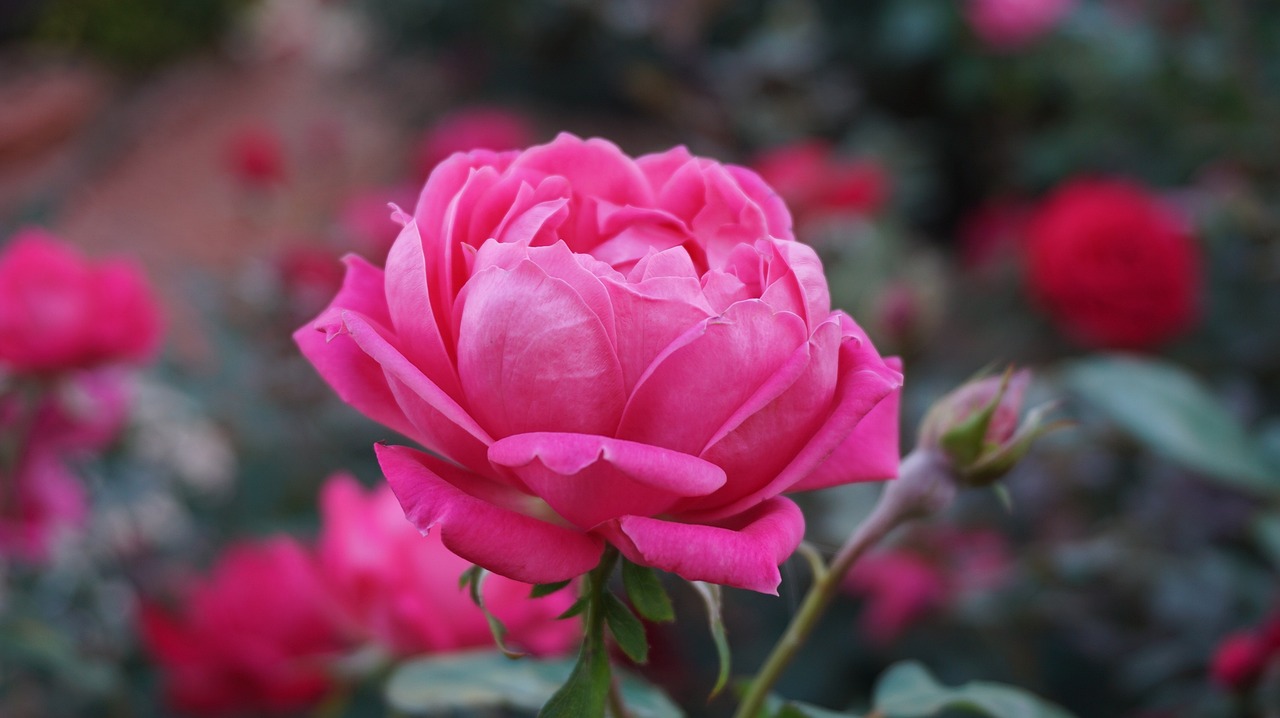
Pest and Disease Management
Managing pests and diseases in your rose garden is not just about keeping the plants looking pretty; it's about ensuring their overall health and longevity. Imagine your roses as the stars of your garden, needing protection from the villains lurking in the shadows. These villains can be insects, fungi, or bacteria, all of which can wreak havoc if left unchecked. So, how do you keep your floral heroes safe? Let's dive into some strategies that will help you maintain a thriving rose garden.
First off, it's essential to be familiar with the common pests that can invade your rose garden. Aphids, spider mites, and Japanese beetles are just a few of the notorious culprits. These pests can cause damage by sucking the sap from the leaves or even laying eggs that hatch into more pests. To help you identify these foes, here's a quick table summarizing their characteristics:
| Pest | Signs of Infestation | Control Methods |
|---|---|---|
| Aphids | Curled leaves, sticky residue (honeydew) | Insecticidal soap, neem oil |
| Spider Mites | Webbing on leaves, yellow speckling | Increased humidity, miticides |
| Japanese Beetles | Skeletonized leaves, presence of beetles | Handpicking, traps, insecticides |
Now that you know your enemies, let’s talk about prevention. A proactive approach is always better than a reactive one. Start by ensuring your roses are healthy and well-nourished, as strong plants are less susceptible to pests. Regularly inspect your plants for any signs of trouble, and don't wait too long to take action. It’s like being a vigilant guardian of your garden!
When it comes to disease management, you’ll want to keep an eye out for common issues like black spot, powdery mildew, and rust. These diseases can spread quickly and may lead to severe damage if not addressed. For instance, black spot manifests as dark spots on leaves, leading to yellowing and dropping leaves. To combat this, ensure proper air circulation around your plants and avoid overhead watering, which can create a damp environment conducive to disease.
Here are some effective strategies for managing diseases:
- Choose resistant varieties: Some rose varieties are bred to resist common diseases, making them a smart choice for your garden.
- Practice crop rotation: If you're planting roses in the same area each year, consider rotating them with other plants to prevent disease buildup in the soil.
- Maintain cleanliness: Regularly clean up fallen leaves and debris, as they can harbor pests and diseases.
Organic solutions can also be highly effective in managing both pests and diseases. For example, introducing beneficial insects like ladybugs can help control aphid populations naturally. Additionally, using homemade sprays made from garlic or hot pepper can deter many pests without harming the environment.
In conclusion, keeping your rose garden healthy requires vigilance and a proactive approach. By understanding the common pests and diseases that can affect your roses, implementing preventive measures, and utilizing organic solutions, you can create a thriving environment for your beautiful blooms. Remember, a little effort goes a long way in ensuring your roses remain the stunning showstoppers of your garden!
Q: How often should I check my roses for pests and diseases?
A: It's a good practice to inspect your roses at least once a week, especially during the growing season. Look for any signs of pests or diseases, and take action immediately if you notice any issues.
Q: What is the best way to control aphids organically?
A: You can control aphids organically by introducing beneficial insects like ladybugs, using insecticidal soap, or spraying a mixture of water and dish soap directly onto the affected areas.
Q: Are there any roses that are resistant to diseases?
A: Yes, many modern rose varieties have been bred for disease resistance. Look for varieties labeled as "disease-resistant" when shopping for new plants.
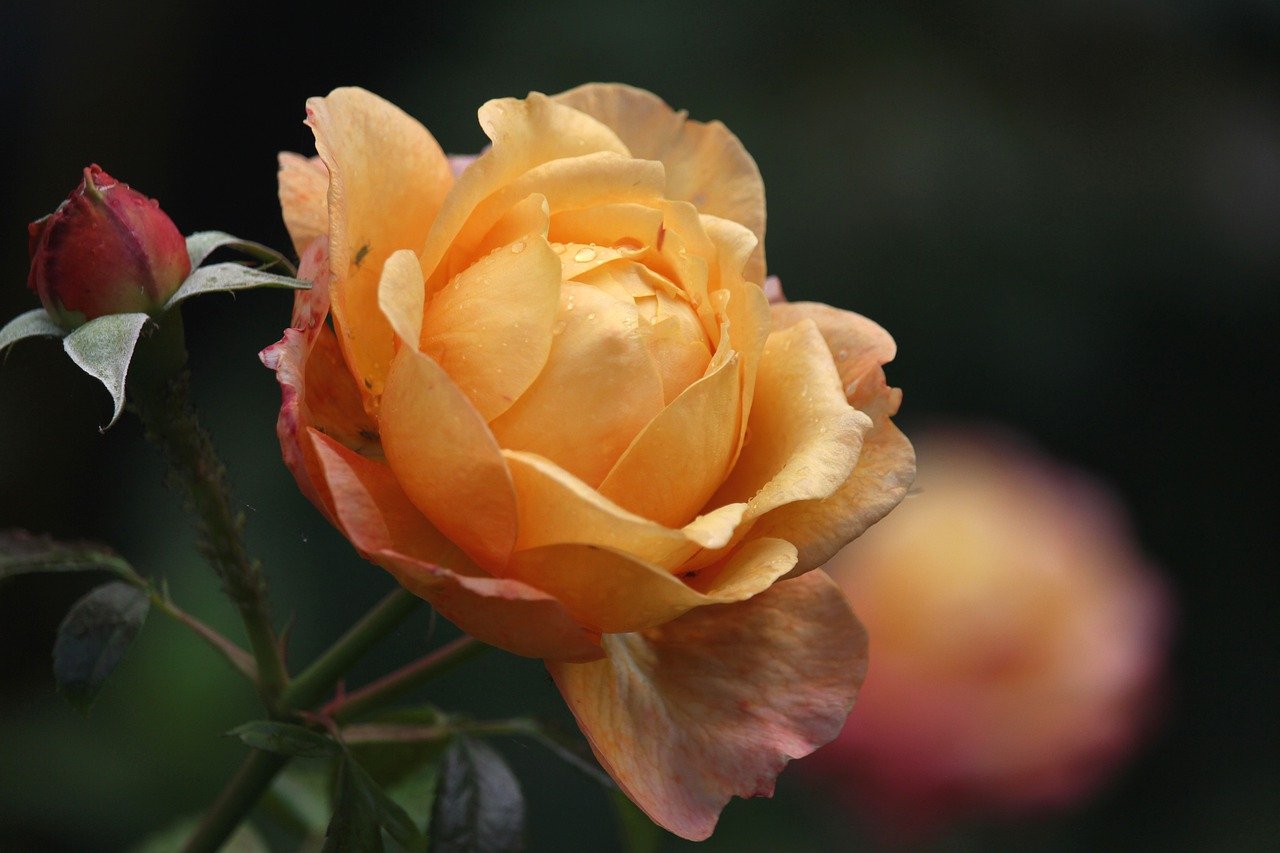
Fertilizing Your Roses
When it comes to cultivating a vibrant rose garden, fertilization is one of the most critical aspects that can make or break your blooms. Just like humans need a balanced diet to thrive, roses require the right nutrients to grow strong and healthy. So, what should you know about fertilizing your roses to ensure they reach their full potential? Let’s dive into the essentials!
First off, it's important to understand that roses are heavy feeders. They demand a mix of macronutrients and micronutrients to flourish. The three primary macronutrients are nitrogen (N), phosphorus (P), and potassium (K). Each plays a unique role in the plant's health:
- Nitrogen promotes lush green foliage and overall growth.
- Phosphorus is essential for root development and blooming.
- Potassium helps build resistance against diseases and improves flower quality.
But wait, there’s more! Roses also benefit from micronutrients like magnesium, calcium, and iron, which help with various physiological functions. So, how do you know which fertilizers to use? Well, the market is teeming with options, but you’ll want to choose a fertilizer that’s specifically formulated for roses. Look for a balanced formula, such as a 10-10-10 or 5-10-5, which indicates the ratio of N-P-K. This will ensure your roses get a well-rounded nutrient supply.
Timing is everything when it comes to fertilizing. Generally, you should start fertilizing your roses in early spring, just as they begin to awaken from dormancy. This is when they need a boost to kickstart their growth. Apply your chosen fertilizer according to the package instructions, typically every 4-6 weeks throughout the growing season. However, be cautious not to over-fertilize, as this can lead to excessive foliage growth at the expense of blooms or even damage the roots.
Another effective method is to use organic fertilizers, such as compost or well-rotted manure. These not only enrich the soil but also improve its structure and water retention capabilities. Organic options release nutrients slowly, providing a steady supply over time, which is fantastic for your roses. Plus, they contribute to a healthier ecosystem in your garden, promoting beneficial microorganisms.
Now, let’s talk about the application methods. You can choose to fertilize your roses in several ways:
- Granular Fertilizer: Simply sprinkle it around the base of the plant and water it in.
- Liquid Fertilizer: Mix it with water and apply it directly to the soil or as a foliar spray for quick absorption.
- Slow-Release Fertilizer: This type releases nutrients gradually, providing a long-term solution.
Lastly, always remember to keep an eye on your roses after fertilizing. Look for signs of nutrient deficiency, such as yellowing leaves or poor blooming, and adjust your fertilization routine accordingly. Your roses will reward your efforts with breathtaking blooms and a garden that’s the envy of the neighborhood!
Q: How often should I fertilize my roses?
A: Generally, fertilize your roses every 4-6 weeks during the growing season, starting in early spring.
Q: Can I use regular garden fertilizer for my roses?
A: While you can use general garden fertilizer, it's best to use one specifically formulated for roses to meet their unique nutrient needs.
Q: What are the signs of over-fertilizing?
A: Signs include burnt leaf edges, excessive leaf growth with few flowers, and wilting or drooping plants.
Q: Is organic fertilizer better than chemical fertilizer?
A: Organic fertilizers are often better for long-term soil health and beneficial microorganisms, while chemical fertilizers provide quick nutrient boosts. It depends on your gardening philosophy!

Pruning Techniques
Pruning your roses might seem daunting at first, but it’s a crucial step in ensuring your garden flourishes. Think of pruning as giving your roses a fresh haircut; it helps them grow stronger and produce more beautiful blooms. The timing and technique of pruning can make all the difference, so let’s dive into the essentials.
First off, understanding when to prune is essential. Generally, the best time to prune most rose varieties is in late winter or early spring, just before new growth begins. This is when the plants are still dormant, and you can easily see the structure of the bush without the distraction of leaves. However, if you're in a warmer climate, you might find that pruning can be done a bit earlier. Always keep an eye on the local weather; if you notice buds swelling, it’s time to grab those shears!
Now, let’s talk about the techniques themselves. The goal of pruning is to remove dead or diseased wood, improve air circulation, and shape the plant for optimal growth. Here are some key techniques to keep in mind:
- Cut at an Angle: When you make your cuts, always do so at a 45-degree angle. This helps to prevent water from pooling on the cut surface, which can lead to rot.
- Remove Dead Wood: Start by cutting out any dead, damaged, or diseased stems. This opens up the plant and allows it to focus its energy on healthy growth.
- Thin Out the Center: If your rose bush is dense, consider thinning out some of the stems in the center. This improves air circulation and reduces the risk of fungal diseases.
- Shape the Plant: Aim for a vase-like shape with an open center. This allows sunlight to reach all areas of the plant, promoting even growth.
One of the most common mistakes novice gardeners make is over-pruning. It’s tempting to cut back a lot, especially if your roses look a bit unruly. However, remember that roses need some foliage to photosynthesize and fuel their growth. A good rule of thumb is to remove about one-third of the plant at most, depending on its health and age.
When it comes to tools, having the right ones can make your pruning experience much smoother. Invest in a quality pair of pruning shears, a lopper for thicker stems, and gloves to protect your hands. Always make sure your tools are clean and sharp; this not only makes the job easier but also reduces the risk of transmitting diseases between plants.
After pruning, it’s a good idea to apply a sealant to larger cuts to protect them from pests and diseases. You can find commercial sealants or even use natural options like tree wound dressings. This extra step can help your roses heal faster and keep them healthy.
In summary, pruning is an art that, when done correctly, can lead to a stunning rose garden. By understanding the right timing, using proper techniques, and caring for your tools, you can ensure that your roses remain healthy and vibrant. So, grab those shears and get ready to transform your rose garden into a picture-perfect paradise!
Q: When is the best time to prune my roses?
A: The best time to prune most rose varieties is in late winter or early spring, just before new growth begins.
Q: How much should I prune my roses?
A: A good rule of thumb is to remove about one-third of the plant, depending on its health and age.
Q: What tools do I need for pruning?
A: Essential tools include quality pruning shears, a lopper for thicker stems, and gloves for hand protection.
Q: Should I seal the cuts after pruning?
A: Yes, applying a sealant to larger cuts can help protect them from pests and diseases.

Seasonal Care Tips
Maintaining a picture-perfect rose garden requires a bit of attention throughout the seasons. Each time of year brings unique challenges and opportunities for your roses, and understanding these can be the difference between a thriving garden and one that struggles to bloom. Let's dive into some essential seasonal care tips that will keep your roses looking their best all year round.
In the spring, as the frost begins to melt away, it's time to wake your roses from their winter slumber. Start by removing any dead leaves or debris that may have accumulated over the winter. This helps prevent diseases and pests from taking hold. After cleaning, give your roses a good drink of water to hydrate them after their dormancy. You might also consider applying a balanced fertilizer to kick-start their growth. The key here is to monitor the weather; if a late frost is forecasted, be prepared to cover your tender roses to protect them from the cold.
As we move into summer, your roses will be in full bloom, showcasing their vibrant colors. However, the heat can be tough on them, so consistent watering is crucial. Aim to water deeply but less frequently to encourage deep root growth. Mulching around the base of your roses can help retain moisture and keep the roots cool. During this time, keep an eye out for pests like aphids and spider mites, which can thrive in the warm weather. If you notice any signs of infestation, act quickly with organic solutions or insecticidal soap.
When autumn rolls in, it’s time to prepare your roses for the colder months ahead. Begin by deadheading spent blooms to encourage a final flush of flowers before winter. Once the leaves start to fall, consider applying a layer of compost around the base of your plants to enrich the soil. This also provides insulation for the roots as temperatures drop. If you live in an area with harsh winters, you might want to wrap your rose bushes with burlap or use mulch to protect them from freezing temperatures.
Finally, in the winter, your roses will be in dormancy, but that doesn't mean you can completely ignore them. Check periodically for any signs of damage from snow or ice. If you notice any broken branches, prune them back to prevent further injury. Also, ensure that your mulch remains in place to protect the roots from the cold. If you live in a particularly harsh climate, consider using rose cones or other protective coverings to shield your plants from severe weather.
In summary, by paying attention to the changing seasons and adjusting your care routine accordingly, you can ensure that your roses remain healthy and vibrant. Just like a well-tuned orchestra, each element of seasonal care plays a crucial role in creating a harmonious and beautiful rose garden.
As you embark on your journey to create a stunning rose garden, you may have some questions. Here are a few frequently asked questions that can help guide you along the way:
- How often should I water my roses? It's best to water deeply once or twice a week, depending on the weather and soil conditions.
- What type of fertilizer is best for roses? A balanced fertilizer with equal parts nitrogen, phosphorus, and potassium is ideal for promoting healthy growth.
- When is the best time to prune roses? Late winter or early spring, just before new growth begins, is the optimal time for pruning.
- How can I prevent pests in my rose garden? Regularly inspect your plants, use organic pest control methods, and encourage beneficial insects.
Frequently Asked Questions
- What are the best rose varieties for beginners?
If you're just starting out, consider easy-to-grow varieties like Knock Out Roses or Floribunda Roses. These types are known for their resilience and ability to bloom continuously throughout the season, making them perfect for novice gardeners.
- How often should I water my roses?
Roses generally need about 1 to 2 inches of water per week. However, this can vary based on your climate and soil type. It's best to check the soil moisture; if the top inch feels dry, it’s time to water. Remember, deep watering is better than frequent shallow watering!
- What is the best time to prune my roses?
The ideal time to prune roses is in early spring when the buds start to swell but before they bloom. This timing encourages healthy growth and abundant blooms. Just think of it as giving your roses a fresh haircut to promote a beautiful new look!
- How can I prevent pests in my rose garden?
Prevention is key! Regularly check your plants for signs of pests and maintain healthy soil. You can use natural solutions like neem oil or introduce beneficial insects like ladybugs to keep the bad ones at bay. Think of them as your garden's little bodyguards!
- What type of fertilizer should I use for roses?
Roses thrive on balanced fertilizers, particularly those high in phosphorus for blooms. Look for products labeled specifically for roses or a general-purpose fertilizer with an N-P-K ratio of 10-10-10. Just like us, they need the right nutrients to flourish!
- Do I need to protect my roses in winter?
Absolutely! In colder climates, protecting your roses is essential. You can mulch around the base with wood chips or straw and cover the plants with burlap to shield them from harsh winds. Think of it as tucking them into a warm blanket for the winter!
- Can I grow roses in containers?
Yes, you can! Many rose varieties do well in containers, especially miniature roses. Just make sure your pot has good drainage and use quality potting soil. Container gardening gives you the flexibility to move your roses around to catch the best sunlight!



















